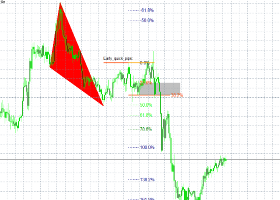What Happens at 10:00 AM in Financial Markets?
At exactly 10:00 AM New York time, financial markets often exhibit increased volatility, particularly in forex, indices, and stock markets. This volatility is not coincidental but is rooted in several key factors that align during this critical time. These influences range from economic data releases, market opening momentum, and institutional activity, to broader market sentiment. Let's dive into the reasons behind the significant market movements at 10:00 AM.
1. Key Economic Data Releases
One of the most notable factors contributing to the heightened volatility at 10:00 AM is the release of key economic data from the U.S. government and other major institutions. Various reports and metrics critical to economic forecasting are often published at this time. Some of these reports include:
- ISM Manufacturing/Non-Manufacturing PMI (Purchasing Managers' Index)
- Consumer Confidence Index
- Job Openings and Labor Turnover Survey (JOLTS)
- Factory Orders
- Business Inventories
These reports provide vital insights into the health of the U.S. economy, influencing everything from currency strength (USD) in the forex market to stock and index movements. Because many market participants anticipate these releases, the reaction to the data can trigger sharp price swings as investors reassess their positions.
2. Market Open Settling Period
At 10:00 AM, the U.S. stock markets have been open for an hour, and by this time, the market begins to settle into a more defined direction after the opening bell volatility. The first hour of trading (9:30 AM - 10:30 AM) is often referred to as the "amateur hour," where retail traders and institutions may react to overnight news and earnings reports. During this first hour, market participants digest the initial wave of trades, but by 10:00 AM, trends for the day begin to emerge. Institutional traders may start to place larger trades based on the market's early movement, adding to the volatility.
3. Institutional Order Flow and Positioning
Institutional traders, such as hedge funds, pension funds, and large banks, tend to execute their orders after gauging the market's initial direction. Many of these large orders—often involving millions or billions of dollars—are processed around 10:00 AM. Since institutions have the resources to move the markets, their trades can amplify price swings, leading to increased volatility across multiple asset classes, including forex, indices, and individual stocks.
4. News Announcements and Media Coverage
Another factor influencing market behavior at 10:00 AM is the release of major news updates. While earnings reports typically come before the market opens, many major companies or analysts issue updates or hold press conferences around 10:00 AM. Additionally, financial media channels, such as Bloomberg, CNBC, and Reuters, release in-depth analyses or breaking news during this time, which can impact market sentiment and lead to sudden price movements.
5. Forex Market Overlap
In the forex market, the increased volatility at 10:00 AM is partially due to the overlap between the U.S. trading session and the end of the European session. This overlap typically runs from 8:00 AM to 12:00 PM (New York time), but by 10:00 AM, liquidity and participation are at their highest. The European close is approaching, and traders in both regions are adjusting their positions, causing forex pairs involving USD and EUR to exhibit more pronounced movements. High-volume pairs like EUR/USD, GBP/USD, and USD/JPY tend to experience larger price fluctuations around this time.
6. Options Market Influence
The options market also plays a significant role in driving market volatility. Many options traders, particularly those using short-term strategies, watch the early market action to determine whether they will roll or exercise options positions. Since options strategies often rely on precise timing, the 10:00 AM mark can be pivotal as traders respond to early trends and determine whether the price will hit key option strike levels by the end of the trading day.
7. Market Sentiment and Investor Psychology
Market sentiment can be particularly reactive around 10:00 AM. Retail investors and day traders, often driven by short-term goals, tend to follow market cues established in the first hour of trading. After the initial frenzy of the open, they may use 10:00 AM as a checkpoint to determine if their positions are gaining or losing momentum. This psychological behavior often results in either the continuation of trends or rapid reversals as traders take profits or cut losses, which adds to market swings.
Summary
The heightened volatility at 10:00 AM in financial markets is a convergence of factors, including critical economic data releases, institutional positioning, and the overlapping of global trading sessions. As a result, traders in various markets—forex, stocks, and indices—often prepare for significant movements at this time. While this volatility presents opportunities for profit, it also introduces substantial risks, making risk management a key focus for those trading around this hour.
Evren Caglar
Trader, Quant Trader
https://www.mql5.com/en/users/axeaca/news



